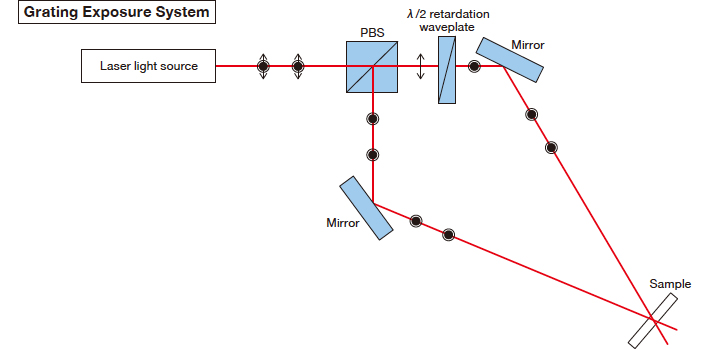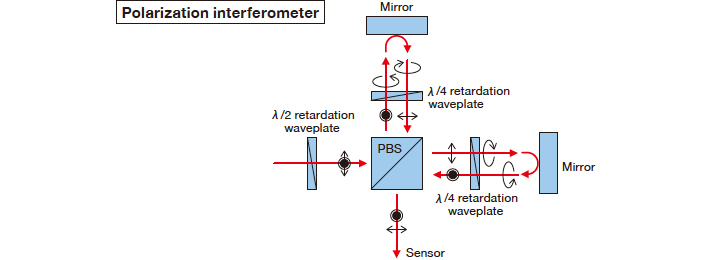Optics & Optical Coatings
Guide
Waveplate Application Note
The waveplate can manipulate the polarization state without a change in light intensity.
Commonly used applications for the waveplate are described in this section.
Half waveplate (λ/2 retardation waveplate)
Changing the polarization direction while fixing the laser.The half waveplate is used to change direction of the linear polarization.
When the crystal axis (fast axis or slow axis) is aligned parallelyl with the polarization direction of the incident beam, the polarization of the exit beam will maintain the same direction.
When the crystal axis of the waveplate is rotated for θ from polarization direction of the incident beam, the polarization of the exit beam rotates for 2θ from polarization direction of the incident beam.
Using this effect, the direction of the linear polarization is arbitrarily rotated with the rotation of the half waveplate.
This method has a merit that the polarization direction is rotatable without change in light intensity.
When the polarization direction of the waveplate is rotated for 90°, the extinction ratio of linear polarization is slightly deteriorated due to the retardation error.
For this reason, insertion of a polarizer next to the waveplate is recommended for the precise polarization measurement, which requires high extinction ratio.
If a quartz waveplate with high parallelism is used, the polarization direction can be changed without beam deflection.
 Varying the light intensity
Varying the light intensity
By combining the polarization beam splitter (PBS) and half waveplate, it is possible to vary the light intensity.
The method can be used to adjust the reflectance as well as the transmittance, and also for ratio between transmission and reflection. This method is highly efficient, which transmittance loss is all converted into the reflectance gain.
One of the features is dynamic range of light intensity adjustment. (97% to 0.3%, depending on the quality of the PBS)
 Examples of special optical system
Examples of special optical system
A half waveplate is used when aligning P and S-polarized light which is separated by PBS into same polarization direction.
Below is an example of optical system to expose the grating by two-beam interferometry.
Interference fringes with good contrast can be obtained by aligning the polarization direction.

It is used to convert linear polarization into circular polarization, but also commonly used for the polarization measurements.
Used to prevent the back reflectionIn experiments using a laser, the laser oscillation may be unstable if the back reflection from mirror or optics is returned to the laser. An optical isolator is used to prevent this returning light.
A typical optical isolators are composed of quarter waveplate and a polarizer.
The light passes through the quarter waveplate two times during the round-trip reflection.
Since the circular polarization does not change its rotational direction in mirror reflection, the retardation of total 180 degrees is obtained from phase difference amount of twice passed through the quarter waveplate.
With the retardation obtained, the polarization direction of the mirror reflection, which passes the quarter waveplate is rotated by 90 degrees with respect to the incident polarization direction. This will make reflected light not able to pass through the polarizer, and block out the back reflection.
 Used for polarization measurement (Senarmont method)
Used for polarization measurement (Senarmont method)
Feature of quarter waveplate is that it is possible to convert incident linear polarization into circular polarization, but also into other state of linear polarization or various elliptical polarization.
Conversely, when elliptical axis of incident light is accurately aligned against quarter waveplate optical axis, arbitrary elliptical polarization can be converted into linear polarization.
The azimuth γ of the incident linear polarization is defined by the ellipticity of the elliptical polarization, which corresponds to half of the retardation Δ.
The polarization measurement using this principle is named Senarmont method.
Senarmont method is commonly used when measuring minute stress (birefringence).
 Examples of special optical system
Examples of special optical system
A Michelson interferometer using a PBS and quarter waveplate is introduced.
Utilizing the polarization, the unnecessary back reflection is reduced and stability of the interference fringes is enhanced.
Incident light is collected on the observation side without a loss, but in order to observe polarization, insertion of the polarizer is demanded with 50% reduction of light intensity.




